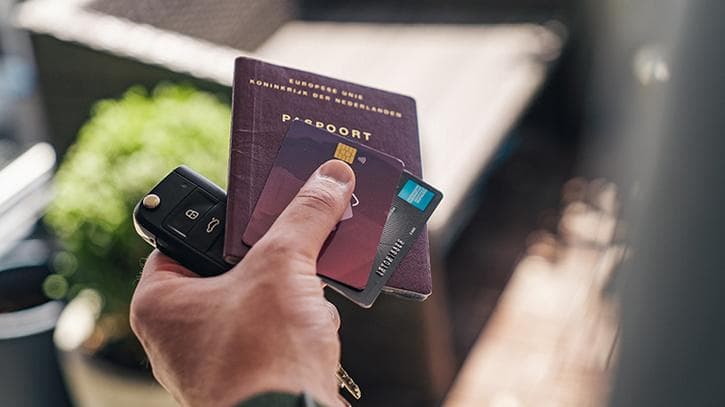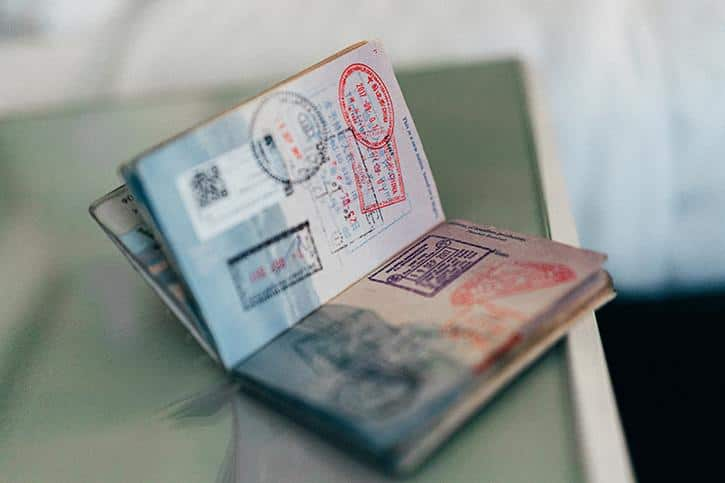

If you are a frequent traveller who enjoys seeing the world, you will always have your passport with you. But have you ever considered your passport, which plays a vital part in easing your journey because, without it, you wouldn’t be able to cross international borders?
For travellers, the passport represents freedom, adventure, and new experiences. It enables you to enter a country and discover all of its attractions and mysteries. We’ve compiled a list of fascinating facts about passports for you. Its major role is to identify where its bearer came from and where he went. It basically serves to show that a person can enter and leave a nation.
We previously purchased a list of countries to which Indian passport holders are eligible for visa-free travel, and today we will discuss some astonishing and fascinating facts about passports around the world:
The passport word first mentioned in the Bible?

Passport has been around for quite some time! In fact, it is one of the Bible’s oldest mentions. It’s found in the Old Testament’s Book of Nehemiah. During the Persian Empire, Nehemiah, an officer in the service of King Artaxerxes I, the sixth King of the Achaemenid Empire of Persia, authorised access to Judea through a royal epistle delivered “to the governors of the region beyond the river” approximately 450BC. The permission to freely circulate, granted in response to a royal request, is the first step toward what will formally become the passport, the laissez-passer we know today.
The origin of the word “passport” dates back to the 15th century

Although the Bible has the earliest reference to the passport, the origin of the two French terms ‘passer’ + ‘port,’ which imply “to pass through a port,” originates from the 15th century. It was also written as a compound word at the time, “passport.” The compound name “passport” was first used to legalise the movement of products, but by the middle of the 15th century, it had spread to include the movement of people. However, it is unclear whether the term “port” refers solely to seaports or to the gateways of fortified cities.
If you have a Face tattoo or face surgery you will require a new passport

If you have a face tattoo or have had facial surgery, you will require a new passport. As a result of the modest change in your appearance, you will need to replace your profile photo. If you have a plain face when you apply for your passport but later get a tattoo or have surgery on your face, you will need to do this.
You can’t wear a uniform or cover your face or head in your passport photo

You are not permitted to have your passport photo taken while wearing any uniform, including hats, caps, and sunglasses. In fact, if your hair is covering your face, you’ll have to retake the photo. Approval is limited to commercial staff such as pilots and flight attendants.
Renew your passport six months before it expires

Don’t take any chances with the expiration date of your passport before going on a trip. Some nations require that your passport be valid for at least 90 days following admission. However, as a precaution, you should guarantee the validity of the certificate for six months, as this is the time period requested by some.
World Passport

A world passport can be obtained if it is granted by the World Service Authority, a nonprofit organisation based in Washington, DC that claims to teach and promote “world citizenship,” “world law,” and “world governance.” Burkina Faso, Ecuador, Mauritania, Tanzania, Togo, and Zambia are among the few nations that have accepted these as travel documents.
Passports have been in use since the 13th century
Since the 13th century, passports have been in use. This concept was introduced by King Henry V to make it easier for him to show his nationality and identity when visiting foreign territories. However, they were not given the name ‘passport’ at the time.
The colours of the passport have meanings

Have you ever noticed that each country’s passport is a distinct colour – red, blue, green, or black? Passports can be defined by one of these four colours, as well as their various tints. Burgundy is appropriate in Europe as a result of an agreement reached in the 1980s. However, several countries have chosen red as a symbol of communism. Blue is the passport colour of the United States to India because it is symbolically associated with the “New World.” The Maghreb and Middle Eastern countries have picked green as their passport colour since it is culturally connected with Islam. Black, which is more uncommon, appears on the passports of numerous Sub-Saharan African countries in reference to the African continent, but it is also the national colour of New Zealand. The British passport is known as the’red book,’ whereas the American passport is known as the ‘blue book.’
Photo ID not mandatory before World War I
The passport went through a lot of changes before arriving at its current state. Photo identification is one of the new requirements. While the first photographs were taken in the early nineteenth century, it took another century for the passport holder’s photo to be required. Certain steps, such as the addition of a photo to identify the owner of a passport, were implemented after World War I. This need appears to have arisen after a German spy was able to enter the United Kingdom using a forged American passport. Family portraits were accepted on passports in 1915 if all members’ faces were clearly visible, but passport procedures were not standardised in the worldwide system until the second part of the twentieth century, following World War II.
The Queen of England doesn’t have a passport

Any citizen of an EU country can travel throughout the European Union with only his national identity card. On the other side, a passport is required to traverse the country’s boundaries. Queen Elisabeth II is not like the rest of the citizens. She doesn’t have a national identification card or a passport, but it doesn’t stop her from travelling around the globe! Indeed, despite the fact that British passports are granted in Her Majesty’s name, the “Queen” herself has no need for them and travels without one! Other members of the “Royal Family,” including her husband, the Prince of Edinburgh, and her son, Prince Charles, do not have this right.
Not all passports have the same value
As you might expect, the ease with which you can travel the world depends on the country of your passport. Unfortunately, when it comes to travelling around, not all people of the world are created equal. The more powerful your passport is and the more mobile you are, the more countries you will be able to visit without needing a visa. The Japanese and Singapore passports, according to Henley Passport Index 2022, are the two most powerful passports in the world, allowing holders to travel to 192 countries without a visa. India has improved its position in the most powerful passport report, moving up to 83rd place from 90th place previously, with a visa-free score of 60.
